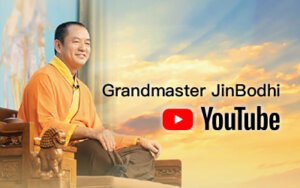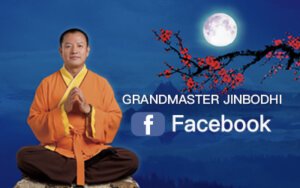
Purpose of Chanting in Buddhism
Chanting is significant in Buddhist practice, serving as a profound means of spiritual communication and connection. The essence of chanting in Buddhism transcends linguistic barriers, allowing direct connection with the deities. Mantras are specific phrases or sounds imbued with spiritual potency and are considered “true words” or “universal words.” These mantras are not merely symbolic but are believed to carry the vibrations that resonate with the energies of deities and enlightened beings.
The uniqueness of mantras lies in their consistency across different languages and cultures. While the names of deities might be mispronounced due to linguistic variations, mantras maintain their form and effectiveness. Mantra is the language we use to connect to deities directly. Bodhisattvas and deities will receive us when we chant their special mantra. If we chant deities’ names, we are likely to pronounce them incorrectly due to historical inaccuracies. The sounds of mantras, however, were taught by the Buddha and remain the same.
By chanting mantras, practitioners aim to invoke divine energies, seek protection, and cultivate inner peace and enlightenment. Chanting is not just vocalizing words but a profound spiritual practice that aligns the practitioner’s mind and heart with the sacred vibrations of the mantra.
Role of Mantras in Meditation
Mantras are integral to Buddhist meditation, serving as tools for deepening concentration and establishing a connection with the higher beings. When chanted with sincerity and focus, mantras facilitate communication with deities, seeking their blessings and protection. The vibrations produced by chanting mantras are believed to purify the mind, calm emotions, and generate positive karma.
Practitioners are encouraged to chant with a mindset of reverence and sincerity. As highlighted in the Chanting Demonstration, “The mantras you chant reach the Buddhas and Bodhisattvas directly. This connection allows us to be blessed by the buddhas which can bring us prosperity, auspiciousness, and many more.” This approach underscores the importance of humility and respect during chanting. This video further advises, “You gain the most benefits when you’re humble and respectful. The lower you position yourself, the more water you get,” illustrating the metaphor that humility allows for a greater accumulation of wisdom, just as lowering oneself in a stream captures more water.
Beginner’s Guide to Buddhist Mantras
For those new to Buddhist chanting, simple and well-known mantras are recommended. These beginner-friendly mantras include:
- Sakyamuni Buddha: Sakyamuni Buddha, also known as Gautama Buddha, is the historical figure who founded Buddhism. His teachings focus on achieving enlightenment through ethical conduct, mental discipline, and wisdom. The mantra associated with Sakyamuni Buddha is often chanted to invoke wisdom and enlightenment, serving as a means for practitioners to connect deeply with the foundational teachings of Buddhism. This practice emphasizes the understanding of the true nature of reality, meditation, and most importantly, enlightening self and others. Chanting this mantra reminds practitioners of the Buddha’s path and his journey towards enlightenment, encouraging them to follow his example and align their lives with his teachings.
- Guanyin (Avalokitesvara) Bodhisattva: Guanyin, also known as Avalokitesvara in Sanskrit, is the Bodhisattva of Compassion, revered for her boundless compassion and mercy. She is also known as the goddess of mercy, often worshipped for protection, illumination, and wisdom. The mantra of Guanyin is chanted to call upon her compassionate energy, bringing solace and support to those in distress. Through this practice, practitioners believe they can receive emotional and spiritual support, especially during challenging times. Chanting Guanyin’s mantra is not only a way to seek her aid but also an opportunity to cultivate compassion within oneself, embodying the qualities of Guanyin and extending that compassion to others.
- Medicine Buddha: The Medicine Buddha, or Bhaisajyaguru, is celebrated for his commitment to healing. He is believed to address both physical and spiritual maladies through his 12 vows, which focus on eliminating suffering and enhancing well-being. Chanting his mantra connects practitioners to his healing energy, believed to cure diseases, purify karma, and ease suffering. This practice not only promotes physical health but also spiritual development, reflecting the Medicine Buddha’s deep compassion. For more insights into the Medicine Buddha’s practices and his healing mantra, watch this video: Medicine Buddha Mantra.
Practicing Buddhist Mantras
Finding a Quiet Place
Practicing Buddhist mantras begins with finding a quiet place free from distractions. This ensures a focused and serene environment essential for effective chanting. A dedicated meditation space can greatly enhance the experience by creating a conducive atmosphere for spiritual practice. By choosing a location that promotes tranquility, practitioners can better immerse themselves in the chanting process, facilitating a deeper connection with the mantra’s vibrations and the divine energies they seek to invoke.
Writing Down Intentions
Before starting the chanting session, it is important to clearly state your intentions or wishes. Writing them down helps focus the mind and set a clear purpose for the practice, making the chanting session more meaningful and directed. By having a written reminder of their intentions, individuals can maintain clarity and direction throughout their chanting practice, enhancing its spiritual effectiveness.
Using Prayer Beads
Utilizing a mala, or prayer beads, is an integral part of practicing Buddhist mantras. A mala typically consists of 108 beads, symbolizing the 108 worldly desires one aims to overcome. By using a mala, practitioners can keep count of their mantra recitations, helping to maintain concentration and mindfulness during chanting. This tool not only aids in tracking repetitions but also serves as a tactile anchor that enhances the meditative aspect of the practice. Handling the beads with each recitation brings a rhythmic and calming element to the chanting, allowing practitioners to stay present and focused in the moment. The use of a mala can enhance meditation, but it is not a necessary component for everyone.
The Right Mindset
Finding the right mindset for chanting is crucial for a fulfilling experience. Ensuring you are mentally prepared and centered will help you stay present during the practice. Watching a guidance video before beginning can provide helpful insights and techniques, setting a positive tone for your chanting session. By combining these practices—selecting a quiet place, writing down intentions, and using prayer beads—practitioners can create a holistic and enriching environment for their mantra recitations.
Timing and Duration for Chanting
Chanting can be practiced at various times of the day, but certain periods are considered more auspicious and conducive to meditation. Optimal times for chanting include early morning and before bed. These quiet and serene times make it easier to focus and connect with the Buddhas, bodhisattva, and deities. This Chanting Tips Video explains that chanting aloud gives the best results.
For beginners, a duration of 30-60 minutes is recommended. This period allows enough time to settle into the practice without causing fatigue. Gradually, practitioners can increase the duration as they become more comfortable with the practice.
When chanting, there are three methods to consider:
- Silent Chanting: Reciting the mantra in the mind without vocalizing. This method is useful when silence is necessary but still allows the practitioner to connect with the mantra’s vibrations.
- Soft Chanting: Whispering the mantra softly. This approach can be soothing and helps maintain focus.
- Aloud Chanting: Chanting the mantra aloud, known as the “Vajra Chant,” is considered the most effective. It enhances vibrations and helps generate powerful spiritual energy.
Conclusion
Engaging in Buddhist chanting practices can profoundly enrich one’s spiritual journey. By incorporating mantras into daily meditation, practitioners can connect with the divine, seek blessings, and cultivate inner peace and enlightenment. When performed with sincerity, reverence, and mindfulness, chanting can lead to transformative spiritual experiences.
You can visit Bodhi Meditation’s Chanting and Mantras for more information on the different types of mantras and online chanting classes available. Participating in chanting retreats can provide a supportive community and deepen your practice. Explore more about these retreats here.

